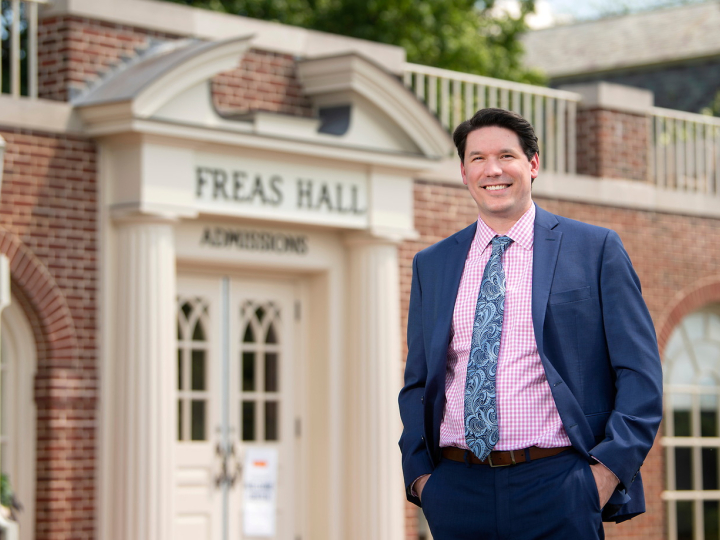LEED-certified Affinity Houses Bring Sustainability Home
June 6, 2018
In August 2012, just over 50 Bucknell students moved into the first rooms on campus certified for sustainable design by the U.S. Green Building Council. Today, with enough sustainably designed space to house more than 10 times that many students, residential life has gotten a lot greener.
In the last academic year, the council certified two new affinity houses on Strohecker Farm Lane as meeting Leadership in Energy and Environmental Design (LEED) standards at the Silver level, a globally recognized marker of sustainability achievement.
Find Your Path
The new houses, which opened last August, are located on the southern end of campus, right next door to Bucknell's first LEED Silver-certified residences (the Kappa Delta Rho and Lambda Chi Alpha houses) and just behind the four-building South Campus Apartments complex, which meets the more rigorous LEED Gold certification level. They are the eighth and ninth residence halls at Bucknell to be LEED certified at the Silver level or above. All told, LEED-certified housing is available for up to 576 Bucknell students each semester.
Each of the 12,500-square-foot affinity houses contains 26 single rooms of approximately 110 square feet as well as a kitchen and common areas. One houses the Sigma Alpha Epsilon fraternity, while the other is home to Enginuity affinity house, a themed residence community focused on service and community-based projects.
Besides incorporating smart resource-saving measures such as room occupancy sensors and low-flow water fixtures, the buildings contribute to a sustainable lifestyle holistically. Covered bike racks, for example, encourage emissions-free travel, landscaping with native plant species eliminates the need for irrigation, and 100 percent of construction lumber was sourced from sustainable forests and certified by the Forest Stewardship Council.
Amy Smalt, Bucknell's campus planner and a LEED-accredited professional, said the impact of these sustainable design measures is especially apparent for residence halls and affinity houses, which are in use 24 hours a day, seven days a week during the academic year.
"We have a real opportunity to have an impact by reducing the energy and and water use in these buildings," Smalt said. "We also hope that the students living in them will have a new or heightened awareness that was not there before that residential experience."
Residential facilities are just one way in which Bucknell incorporates sustainability into student life. In addition to academic coursework in all three colleges, including the environmental studies, environmental engineering and managing for sustainability majors, the Bucknell Center for Sustainability & the Environment sponsors frequent sustainability-related educational programming, including an annual Susquehanna River Symposium and Sustainability Symposium.
In addition, Sustainability Coordinator Debbie Namugayi and the Office of Campus Sustainability organize efforts across campus to engage students in sustainable behavior change. Last semester, student volunteers led their peers in weighing food waste to show the impact of leaving leftovers on their plates, collected signatures for a Sustainable Bucknell Pledge, and organized an Earth Day campus clean-up, among other activities.
"Student engagement is an avenue for incorporating sustainability into student life and the residential learning experience," Namugayi said. "All of these opportunities create a 'next step' for the LEED-certified buildings and affinity houses on campus by educating the people who use these spaces about how they can take action in their daily lives."

